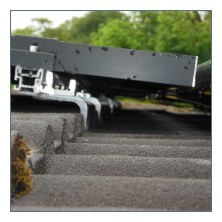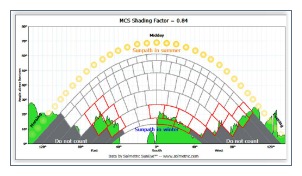Technical and Products
Many of our customers like to know more technical details about the PV system they are investing in. If you have a technical question about your PV installation quote, please contact us.
The major components in a solar PV installation are:
PV panels
Mounting rails and roof anchors
Central inverter(s) or micro-inverters for each panel
AC & DC cable and isolators
PV consumer unit and generation meter



Optional components:
Remote monitoring: SMA Sunny View bluetooth unit, or internet based system for PC, smartphone and tablets
ImmerSUN hot water controller, with My ImmerSUN remote monitoring via PC, smartphone and tablet
Battery storage system to store surplus electricity for use at night
Inverter efficiency
By efficiency, we are really saying, what percentage of the power that goes into the inverter comes out as usable AC current (nothing is ever 100% efficient, there will always be some losses in the system). We fit SMA and SolarEdge inverters which have a maximum efficiency as high as 97 percent.
PV panel efficiency
When talking about solar cell or panel efficiency, we are generally looking at what output we get for a given area, ie watts per square metre. Cells used in PV panels typically have an efficiency of around 15 percent, and an output of around 155 watts per square metre.
High efficiency PV panels are available, which use a slightly different technology, and they typically have an efficiency of 19 percent, and produce around 30 percent more power per square metre than standard PV panels. High efficiency panels are particularly suitable for smaller or more awkward shaped roofs, although they are more expensive than standard panels.
We’re not tied to any panel manufacturer(s), so we choose what's best for your project based on the space available, what size of modules will fit/look best, efficiency, colour & any partial shading.
We only use quality modules with a product guarantee of 10 years or more. Solar panel power output degrades slightly every year after commissioning, typically by around 0.4%. Quality manufacturers have an output guarantee of at least 80% of initial output after 25 years and at least 90% of its initial output after 10 years.
Shading
If even a small section of a photovoltaic panel is shaded - for example by the branch of a tree - there is a very significant drop in power output from the panel. This is because a PV solar panel is made up of a string of individual solar cells connected in series with one another. The current output from the whole panel is limited to that passing through the weakest link cell. If one cell (out of for example 36 in a panel) is completely shaded, the power output from the panel will fall to zero. If one cell is 50% shaded, then the power output from the whole panel will fall by 50% - a very significant drop for such a small area of shading.
As a result shading PV panels should be avoided at all if possible or, at least, limited to early morning/late evening and preferably in the winter only.
 We use an electronic device called SolMetric SunEye to complete a comprehensive shade survey for all our solar projects. The shade survey takes into account near shading from chimneys, dormer windows etc, as well as less obvious shade further away eg from trees in neighbouring gardens/fields. The analysis we give our customers shows month by month the affect of shading on power generation.
We use an electronic device called SolMetric SunEye to complete a comprehensive shade survey for all our solar projects. The shade survey takes into account near shading from chimneys, dormer windows etc, as well as less obvious shade further away eg from trees in neighbouring gardens/fields. The analysis we give our customers shows month by month the affect of shading on power generation.
Orientation and pitch
Orientation and pitch have less effect than most people think. Moving the orientation from south to south-west/south-east, for example, reduces efficiency by less than 5% as does reducing the pitch from 30 degrees to less than 20 degrees.
